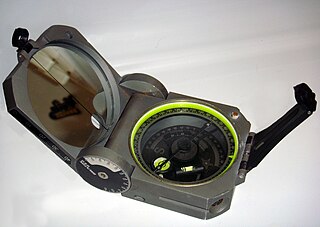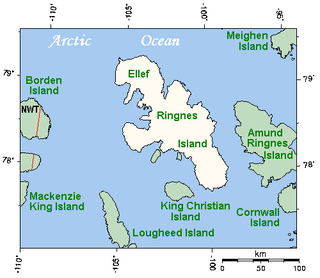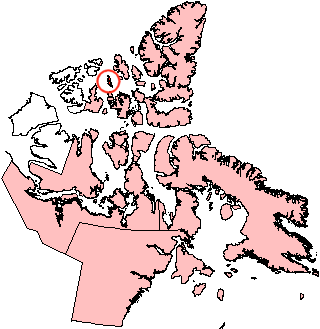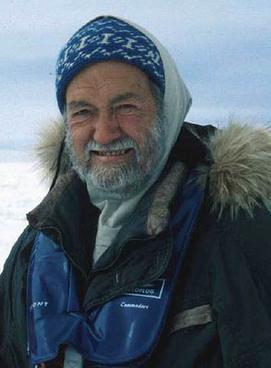Race history
In 2003, Chris McLeod and Tony Martin captained the first and second place teams, respectively, in the first ever Polar Race. On their return to England, they decided to set up and run an alternative challenge themselves, and formed Polar Challenge Limited. Since then, they have organised and run the Polar Challenge every year. In 2004 the race was filmed for a BBC documentary series called ‘The Challenge’ which aired on worldwide television. Paul “Seamus” Hogan, a sales manager from London, England, with no experience of the outdoors whatsoever, was asked to enter the Challenge for the program. His team, Team Fujitsu led by Chris McLeod went on to win the race. In 2007, at the same time as the Challenge, the BBC's Top Gear programme presenters became the first people to drive to the 1996 location of the magnetic north pole in the Hilux Arctic Challenge. It was later broadcast as the Top Gear: Polar Special .
The current race record holders are Team Hardware.com, consisting of Henry Cookson, Rupert Longsdon & Rory Sweet who won the challenge in 2005, they then went on to enter the Guinness Book of Records by being the first people to reach the Southern Pole of Inaccessibility by foot & kite ski in 2007. They were guided here by veteran guide Paul Landry whom they met during training in Resolute Bay prior to the race starting.

The North Pole, also known as the Geographic North Pole, Terrestrial North Pole or 90th Parallel North, is the point in the Northern Hemisphere where the Earth's axis of rotation meets its surface. It is called the True North Pole to distinguish from the Magnetic North Pole.

In navigation, bearing or azimuth is the horizontal angle between the direction of an object and north or another object. The angle value can be specified in various angular units, such as degrees, mils, or grad. More specifically:

Sir David Kim Hempleman-Adams, is a British industrialist and adventurer.

Isachsen is a remote Arctic research-weather station named after the Norwegian explorer of the Arctic, Gunnar Isachsen. It is on the western shore of Ellef Ringnes Island in the Sverdrup Islands, in the territory of Nunavut in Canada. Isachsen Station was established to participate in a joint Canadian-American weather observation program. Isachsen Station operated from April 3, 1948, through September 19, 1978. Regular weather observations began on May 3, 1948. In October 1949, a Douglas C-47 Skytrain crash-landed near the station. No one was killed, but three on board were injured. The wreckage has been preserved by the cold weather and dry conditions.

Bathurst Island is one of the Queen Elizabeth Islands in Nunavut, Canada. It is a member of the Arctic Archipelago. The area of the island is estimated at 16,042 km2 (6,194 sq mi), 115 to 117 mi long and from 63 mi (101 km) to 72 mi (116 km) to 92.9 mi (149.5 km) wide, making it Canada's 13th largest island. It is located between Devon Island and Cornwallis Island in the east, and Melville Island in the west. Four small islands of Cameron, Vanier, Massey and Alexander lie in its northwest.

Ellef Ringnes Island is an uninhabited island and one of the Sverdrup Islands in the Qikiqtaaluk Region, Nunavut, Canada. A member of the Queen Elizabeth Islands and Arctic Archipelago, it is located in the Arctic Ocean, east of Borden Island, and west of Amund Ringnes Island. It has an area of 11,295 km2 (4,361 sq mi), making it the 69th largest island in the world and Canada's 16th largest island. Its highest mount is 260 m (850 ft).

Resolute or Resolute Bay is an Inuit hamlet on Cornwallis Island in Nunavut, Canada. It is situated at the northern end of Resolute Bay and the Northwest Passage and is part of the Qikiqtaaluk Region.

Lougheed Island is one of the uninhabited members of the Queen Elizabeth Islands of the Arctic Archipelago in the Qikiqtaaluk Region, Nunavut. It measures 1,312 km2 (507 sq mi) in size. It is relatively isolated compared to other Canadian Arctic islands, and is located in the Arctic Ocean, halfway between Ellef Ringnes Island to the northeast and Melville Island to the southwest. It is part of the Findlay Group.

Sir Walter William Herbert was a British polar explorer, writer and artist. In 1969 he became the first man fully recognized for walking to the North Pole, on the 60th anniversary of Robert Peary's disputed expedition. He was described by Sir Ranulph Fiennes as "the greatest polar explorer of our time".

The NimrodExpedition of 1907–1909, otherwise known as the British Antarctic Expedition, was the first of three expeditions to the Antarctic led by Ernest Shackleton and his second time to the Continent. Its main target, among a range of geographical and scientific objectives, was to be first to reach the South Pole. This was not attained, but the expedition's southern march reached a Farthest South latitude of 88° 23' S, just 97.5 nautical miles from the pole. This was by far the longest southern polar journey to that date and a record convergence on either Pole. A separate group led by Welsh Australian geology professor Edgeworth David reached the estimated location of the South magnetic pole, and the expedition also achieved the first ascent of Mount Erebus, Antarctica's second highest volcano.
Janice "Jan" Meek FRGS is a British adventurer and ocean rower. In 1997, she took part in the first Atlantic Rowing Race, the Port St. Charles Barbados Atlantic Rowing Race. Meek successfully crossed the Atlantic Ocean unsupported in a 23-foot (7.0 m) wooden rowing boat in 101 days with her son, Daniel Byles. She currently holds four Guinness World Records.
The Polar Race was a biennial race from Resolute on Resolute Bay, Nunavut in northern Canada to the North Magnetic Pole. Teams of two, three or four walk/ski 350 nautical miles pulling their food and equipment on sleds. Although not unsupported, there were strict rules on the carrying of equipment, with only food, fuel and camera batteries permitted to be replenished at the three checkpoints along the route.
Richard (Rich) Profit is an English mountaineer, sailor, a former British Army officer and polar adventurer. In 2007 he took part in the Polar Race with the mother and son pair Janice Meek and Daniel Byles, successfully walking and skiing 350 nautical miles from Resolute, Nunavut to the Magnetic North Pole in 20 days and 5 hours, helping to set two Guinness World Records. He is married with two sons.

Top Gear: Polar Special, also known as the Polar Challenge, is a special edition episode of BBC motoring programme Top Gear that was first broadcast on 25 July 2007 on BBC Two. The episode follows presenters Jeremy Clarkson and James May in their successful attempt to be the first people to reach the 1996 position of the North Magnetic Pole in a motor vehicle. They did not, however, reach the actual position of the North Magnetic Pole at the time which in 2007 was 150 miles away. They were also 1200 miles away from the geographical North Pole. For added drama and competition, they raced against presenter Richard Hammond who travelled by dog sled, the traditional means of transport around the Arctic. This was the first episode ever aired in HDTV.
Jock Wishart is a maritime and polar adventurer, sportsman and explorer. Until his successful 2011 Old Pulteney Row to the Pole, he was best known for his circumnavigation of the globe in a powered vessel, setting a new world record in the Cable & Wireless Adventurer and for organising and leading the Polar Race.
Polaris zinc mine was a former underground mine on Little Cornwallis Island in the Canadian territory of Nunavut. The zinc mine was located 1,120 km (700 mi) north of the Arctic Circle, and 96 km (60 mi) north of the community of Resolute. It closed in July 2002 following more than twenty years of zinc production.

Henry John Richard Cookson, FRGS is a British polar explorer and adventurer. On 19 January 2007 he, alongside fellow Britons Rory Sweet and Rupert Longsdon, and their Canadian polar guide Paul Landry, became the first team to reach the southern pole of Inaccessibility (POI) by foot, the last visitors being a research team using tracked vehicles & planes in 1965.

The north magnetic pole, also known as the magnetic north pole, is a point on the surface of Earth's Northern Hemisphere at which the planet's magnetic field points vertically downward. There is only one location where this occurs, near the geographic north pole. The geomagnetic north pole is the northern antipodal pole of an ideal dipole model of the Earth's magnetic field, which is the most closely fitting model of Earth's actual magnetic field.
The Row To The Pole was a major expedition, which navigated a rowing boat to the North Magnetic Pole at 78°35.7N 104°11.9W, the position certified in 1996. Its mission was to highlight the scale and pace of the retreat of the Arctic Ocean's floating sea ice. It is believed to be the only polar expedition to feature rowing boats since the crew of Sir Ernest Shackleton's row to Elephant Island off South Georgia in 1916, after his aborted attempt to cross Antarctica. The 450-mile journey took almost four weeks.












